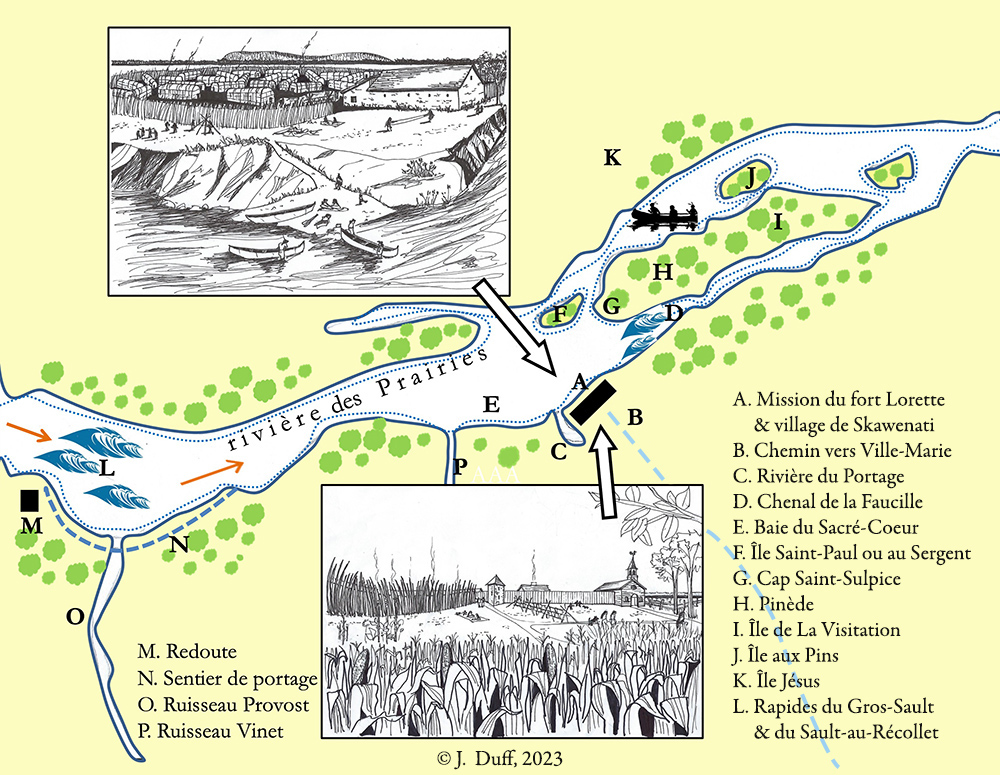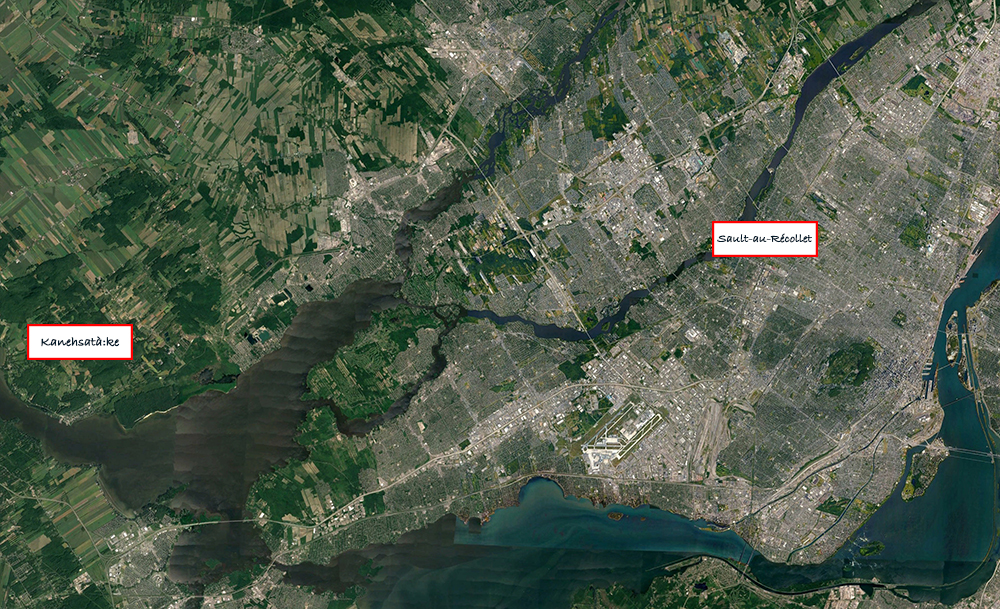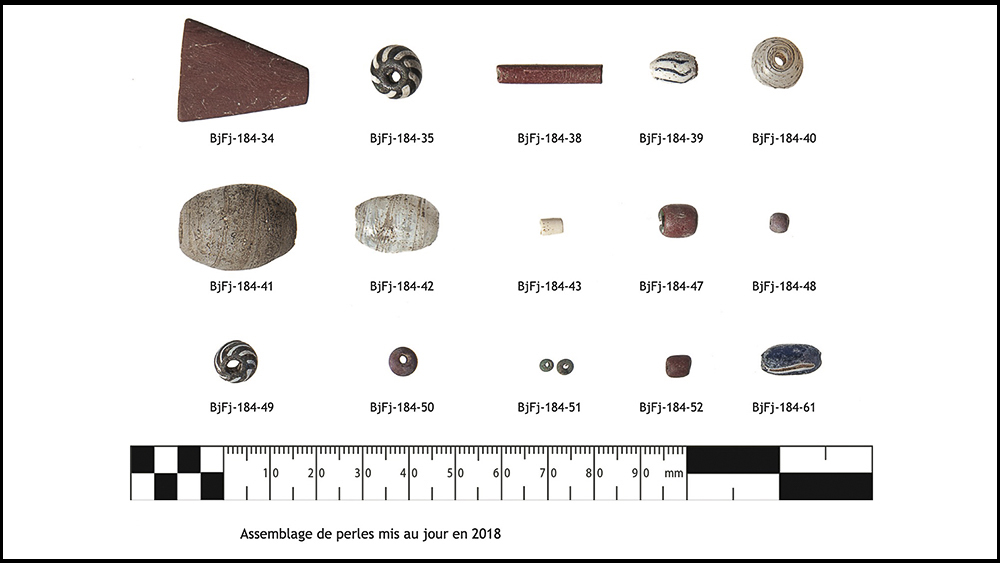First Peoples’ presence
On the third day of his visit, Pehr Kalm meets with Father Chambon to discuss various subjects. He learns that the site was once occupied by a missionary outpost to reach and convert the Indigenous population. When the French came, they were living in the heights of the Island of Montreal and its surrounding region.
The French persuaded them to leave the mountain and started occupying the land that the Indigenous people had cleared. They later settled in Sault-au-Récollet where a small wooden church, still standing today, was built for them. The French later convinced them to move once more to the Lac des Deux Montagnes region.

This illustration shows the geographical context of the fort of the missionary outpost of Nouvelle-Lorette, between the Gros-Sault rapids and La Visitation Island, in the early 1700s. Two theories exist as to the exact location of the Indigenous village in relation to the fort. Infographics © Jocelyn Duff, 2023.
Since the beginning of time, the Indigenous people living on the mission had been growing corn, tobacco, as well as many other crops, like melons. Father Chambon gave his guest a few sizable balls of maple sugar to bring back to Sweden.
Although they had never totally abandoned their ancestral customs, some of the women did start wearing berets, while the men adopted the French’s coats and blouses: “However, no one has yet been able to convert them to wearing pants, added the priest, as they believe it would much impede their stride.” When travelling, they wore blankets decorated with a blue and red trim.
It is also tradition for them to “adopt the children made prisoners during a war, to replace the ones lost in said conflict.” The Father stationed on the mission, Robert-Michel Gay, would participate in raids as a chaplain, despite repeated warnings from his superiors. Sister Marie-des-Anges, the fort’s nun who was in charge of teaching the children, was herself a former British prisoner bought back by the French.
Stéphane Raymond, a Métis, tells us about what remains of their passage in the Sault today.
Stéphane Raymond, Métis, speaks with Stéphane Tessier
Video with transcript (EN). Subtitles available in English and French.

The site of the Nouvelle-Lorette missionary outpost, and the area where the indigenous population resettled in 1721 (known today as the community of Kanehsatà:ke), overlaid onto an aerial view of the Greater Montreal Area.
Yvon Gagnon and the arrowhead
Video with transcript (EN). Subtitles available in English and French.


